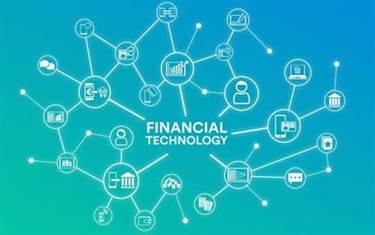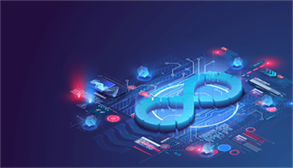Content
- Types Of Edge Computing Technology
- By The Book: Defining edge
- What Is Edge Computing? Everything You Need To Know
- Network Engineers Definitions Of The Edge Computing
- Meeting Edge Ai Performance With M 2 Accelerators
- Program Preview: A Live Look At The Caltech Cloud Computing Bootcamp
- Edge Computing Challenges
Every restaurant location runs analytics on smart kitchen equipment data to make decisions like exactly when to put the fries in the fryer for perfect crispiness. They use edge computing to hyper-personalize these kinds of actions for each store. Limitless compute on demand – Cloud services can react and adapt to changing demands instantly by automatically provisioning and deprovisioning resources.

For an industrial business that relies on data generated by operating processes, such vulnerabilities can disrupt entire operations. In this case, the intermediary server replicates cloud services on the spot, and thus keeps performance consistent and maintains the high performance of the data processing sequence. Edge computing continues to evolve, using new technologies and practices to enhance its capabilities and performance. Simply due to local conditions, securing data at the network edge cannot hold a candle to the security standards of a data center. Data transmission between edge endpoints, gateways, and central control and cloud systems should be encrypted end-to-end.
Types Of Edge Computing Technology
Some use the terms “fog computing” and “edge computing” synonymously, but the two operate at different scales. That’s where edge computing comes in, and organizations have already begun to realize its benefits. While most data processing today still happens at centralized data centers, it’s estimated that by 2025, 75% of data will be created and processed outside of a traditional data center or cloud. What’s more, 90% of all data that enterprises collect today is never actually used. However, thanks to its low latency and high connectivity, edge computing is better positioned to transform that data into actionable insights.
Both processes rely on data processing on the spot for initial proceedings (i.e. decode the request) and connection to the center to further refinement of the model (i.e. send results of the operation). On the other hand, processing data on the spot, and then sending valuable data to the center, is a far more efficient solution. 68% of developers want to expand use of what is edge computing with example modern application frameworks, APIs and services. A good infrastructure is required, such as high-bandwidth telecommunications, ICT infrastructure in the substation or existing telecom equipment (i.e. routers). Besides, the smart sensor is also capable of triggering Digital I/O pins that can be connected to an alarm or relay information even when the network is down.

Or if you already have a setup, our Cloud Networking service can connect your edge servers to the public cloud faster. Like we stated earlier, with cloud computing, IoT devices such as a laptop or smartphone utilize the internet to provide users with access to the information they need. Additionally, the data accessed in cloud computing is stored https://globalcloudteam.com/ in a central location, referred to as a data center. Data centers allow for greater control, security, and reliability since all data is collected and stored in one spot. Modeled after clouds, cloudlets are mobility enhanced small-scale data centers placed in close proximity to edge devices so they can offload processes onto the cloudlet.
By The Book: Defining edge
Edge monitoring often involves anarray of metrics and KPIs, such as site availability or uptime, network performance, storage capacity and utilization, and compute resources. Edge computers are also often used in product manufacturing facilities for industrial automation and control purposes. For example, edge computers enable communication between factors machines, sensors, and equipment. Also, they allow communication between such devices and the internet, allowing them to offload critical information to the cloud for remote monitoring and control. Additionally, edge computers are capable of consolidating workloads by grouping multiple operations onto a single system.

For this reason, the image and position data determined by the sensor system is processed directly on the device. There have been many useful applications of cloud computing — convenience, cost, efficiency — which is now being taken to the next tier through edge devices. Thanks to devices getting smarter and more powerful, they are becoming more capable of handling and processing large amounts of data, reducing the need for the compute power of a traditional data center. By encouraging organizations to move their data to the edge, there’s an emphasis reducing latency and providing more processing of data close to the source.
What Is Edge Computing? Everything You Need To Know
Edge computing helps you unlock the potential of the vast untapped data that’s created by connected devices. You can uncover new business opportunities, increase operational efficiency and provide faster, more reliable and consistent experiences for your customers. The best edge computing models can help you accelerate performance by analyzing data locally. A well-considered approach to edge computing can keep workloads up-to-date according to predefined policies, can help maintain privacy, and will adhere to data residency laws and regulations. Perceive creates chips for edge devices, primarily smart home security devices.
However, small and medium-sized businesses frequently utilize cloud computing as well. However, a clear distinction needs to be made between devices with computer power and edge computing serving many devices simultaneously. Management.The remote and often inhospitable locations of edge deployments make remote provisioning and management essential. IT managers must be able to see what’s happening at the edge and be able to control the deployment when necessary. Connectivity.Connectivity is another issue, and provisions must be made for access to control and reporting even when connectivity for the actual data is unavailable.
This distributed computing is a great infrastructure strategy where ultra-low latency and real-time response are critical to application performance and user experience. A real-world example is the Sensormatic video-based artificial intelligence solution, which tracked occupancy and monitored social distancing within stores, ultimately helping retailers safely re-open during the COVID-19 pandemic. Intel’s experience developing solutions that bridge data storage, transmission, processing, and analysis has resulted in tens of thousands of edge deployments powered by Intel. As all networks have a limited bandwidth, the volume of data that can be transferred and the number of devices that can process this is limited as well. By deploying the data servers at the points where data is generated, edge computing allows many devices to operate over a much smaller and more efficient bandwidth. However, the exponential growth in the volume of data produced and the number of devices connected to the internet has made it difficult for traditional data center infrastructures to accommodate them.
Build, run, secure, and manage all of your apps across any cloud with application modernization solutions and guidance from VMware. Empower your employees to be productive from anywhere, with secure, frictionless access to enterprise apps from any device. Operate apps and infrastructure consistently, with unified governance and visibility into performance and costs across clouds. However, it’ll likely take several more years for edge to go beyond consumer applications and into infrastructure across all industries. This evolution will occur as other cutting-edge technologies such as 5G and blockchain continue to evolve and mature. Can be managed with the same tools and processes as centralized infrastructure for automated provisioning, management and orchestration of hundreds of sites with minimal IT staff, if any.
- The solution keeps pace with the uptime and production line speed, which only edge computing could allow.
- Lower upfront cost – The capital expense of buying hardware, software, IT management and round-the-clock electricity for power and cooling is eliminated.
- They aren’t necessarily single-use, but they also aren’t as versatile as strictly cloud devices.
- By moving powerful edge computing closer to where data is generated, enterprises and service providers can identify new revenue opportunities, offer innovative services, and save time and money on operations.
- By processing data at a network’s edge, edge computing reduces the need for large amounts of data to travel among servers, the cloud and devices or edge locations to get processed.
- The earliest tech definitions of edge computing were broad, referring to any data stored at the edge of the network.
- Although it is already in use today, the benefits of edge computing will play an even more important role in enabling revolutionary new technologies on the near horizon.
Cloud computing is often used because it provides businesses and organizations with a way to obtain quick access to compute power, storage, and databases without investing in the underlying infrastructure. With the amount of data growing exponentially, alternatives are being sought to alleviate the stress placed on data centers. Edge computing can lessen the stress placed on data centers by storing and processing data locally on edge computing devices. Edge computers have come a long way and can be configured with powerful processors and large amounts of high-speed data storage, enabling them to process and store data at the edge instead of the cloud. For example, autonomous drones deployed for package delivery, bridge inspection or crop dusting will be enabled by combing together 5G wireless radio communications technology and edge computing.
As data is significantly more valuable in aggregate, this is a crucial downside. Hence, under circumstances where latency is not an issue, cloud computing is preferred over edge computing. Today, edge computing tends to be used solely for IoT devices and streaming services, while cloud computing remains the most popular option for traditional IT environments. Furthermore, in the case of edge computing, outages are less likely for users because maintenance can be done or damage can occur to micro-servers or edge servers without all network users being affected. And, because edge computing uses more distributed data centers, it’s easier for service providers to stager maintenance and get personnel onsite faster. This is why many enterprises deploy their AI applications using edge computing, which refers to processing that happens where data is produced.
Network Engineers Definitions Of The Edge Computing
This is so because data that set off specific triggers is sent to the cloud for post-processing and analysis. For businesses and organizations that are on metered data plans, this will result in significant cost savings. That said, even though edge computing is gaining massive popularity, cloud computing still has its place in today’s modern world.

Although only 27% of respondents have already implemented edge computing technologies, 54% find the idea interesting. Furthermore, rugged edge PCs are equipped with shock and vibration resistance. Systems are capable of withstanding 5Gs of shock and 50GRMs of vibration in compliance with the MIL-STD-810G. This allows organizations to deploy systems in environments where the industrial PC will be exposed to frequent and continuous shock and vibration. Additionally, edge computers are equipped with a wide operating temperature range, ranging from -40°C to 85°C. Having a wide operating temperature permits deployers to deploy them in extremely cold or scorching environments.
Meeting Edge Ai Performance With M 2 Accelerators
Edge computing refers to processing, analyzing, and storing data closer to where it is generated to enable rapid, near real-time analysis and response. In recent years, some companies have consolidated operations by centralizing data storage and computing in the cloud. For example, if a user in Chicago sends an email to a coworker in Paris, a delivery delay is expected. This is because the user’s email application in Chicago has to communicate with a server that is located in New York City.
Leverage an edge computing solution that nurtures the ability to innovate and can handle the diversity of equipment and devices in today’s marketplace. Computing that takes place off of the device, over the internet, is usually facilitated through the more familiar cloud computing. Grow your user base rapidly with the #1 edge cloud services provider in emerging markets. Fast forward to today, and the evolution of edge computing is continuing to accelerate. Today edge computing supports a much wider range of functions like IoT, e-learning, gaming, enterprise SaaS, and blockchain, to name a few examples.
Edge systems must have a minimum level of protection against tampering to make it difficult for attackers to gain access to the network. This includes securely mounted housing covers and sensors that immediately report physical attempts of tampering. The issue of tamper-proofing is particularly important for devices that are installed in public spaces, where protection against access provided inside offices, production facilities, or factory halls is not available. Many IT professionals are now questioning whether edge computing will replace the cloud.
According to IDC, global spending on Edge computing will hit $250 billion by 2024. The main benefit of edge computing is reducing the risk of network outages or cloud delays when highly interactive — and timely — experiences are critical. Edge enables these experiences by embedding intelligence and automation into the physical world. Think optimizing factory operations in a factory, controlling robotic surgery on a patient, or automating production in a mine. Edge computing is a new capability that moves computing to the edge of the network, where it’s closest to users and devices — and most critically, as close as possible to data sources. A hybrid cloud architecture allows enterprises to take advantage of the security and manageability of on-premises systems while also leveraging public cloud resources from a service provider.
In simplest terms, edge computing moves some portion of storage and compute resources out of the central data center and closer to the source of the data itself. Only the result of that computing work at the edge, such as real-time business insights, equipment maintenance predictions or other actionable answers, is sent back to the main data center for review and other human interactions. 5G facilitates bringing cloud-like processing power, storage, and networking closer to the edge where end-users are located. The second benefit of edge computing is that it reduces the amount of internet bandwidth required.
Edge computing solutions are often deployed in oil and gas fields to monitor and control the enormous amounts of assets deployed in oil and gas fields. For example, edge PCs are used to monitor the flow of fuel in pipelines, providing gas and oil production facilities with invaluable insights into their operations. Diverse cooling solutions greatly improve efficiency in the data center and offer more computing power in a densely packed rack. In blockchain, data has to travel through the entire network and back whenever one blockchain node communicates with another. But edge prevents data from traveling through the core network, instead directly facilitating server-to-server communication.